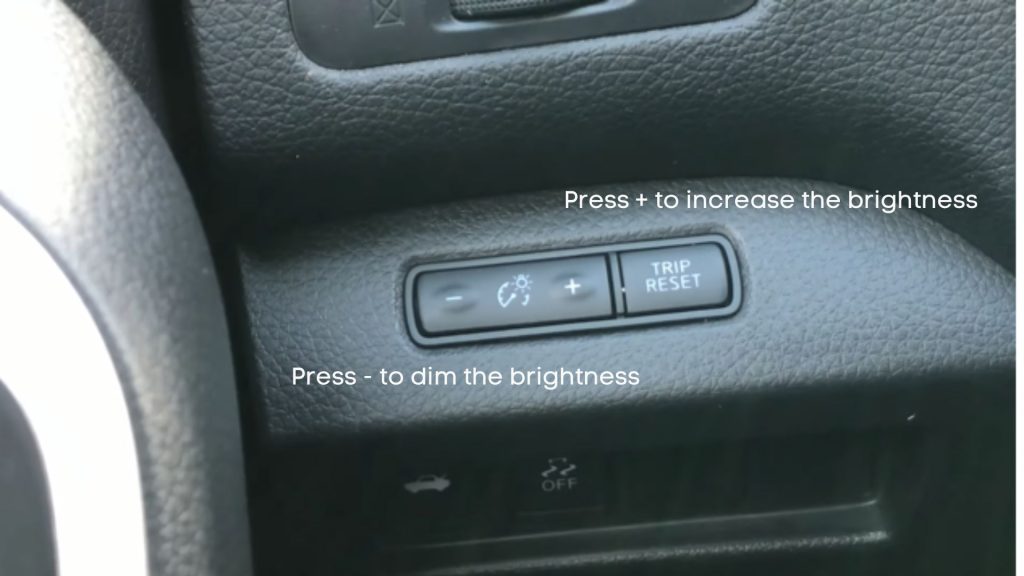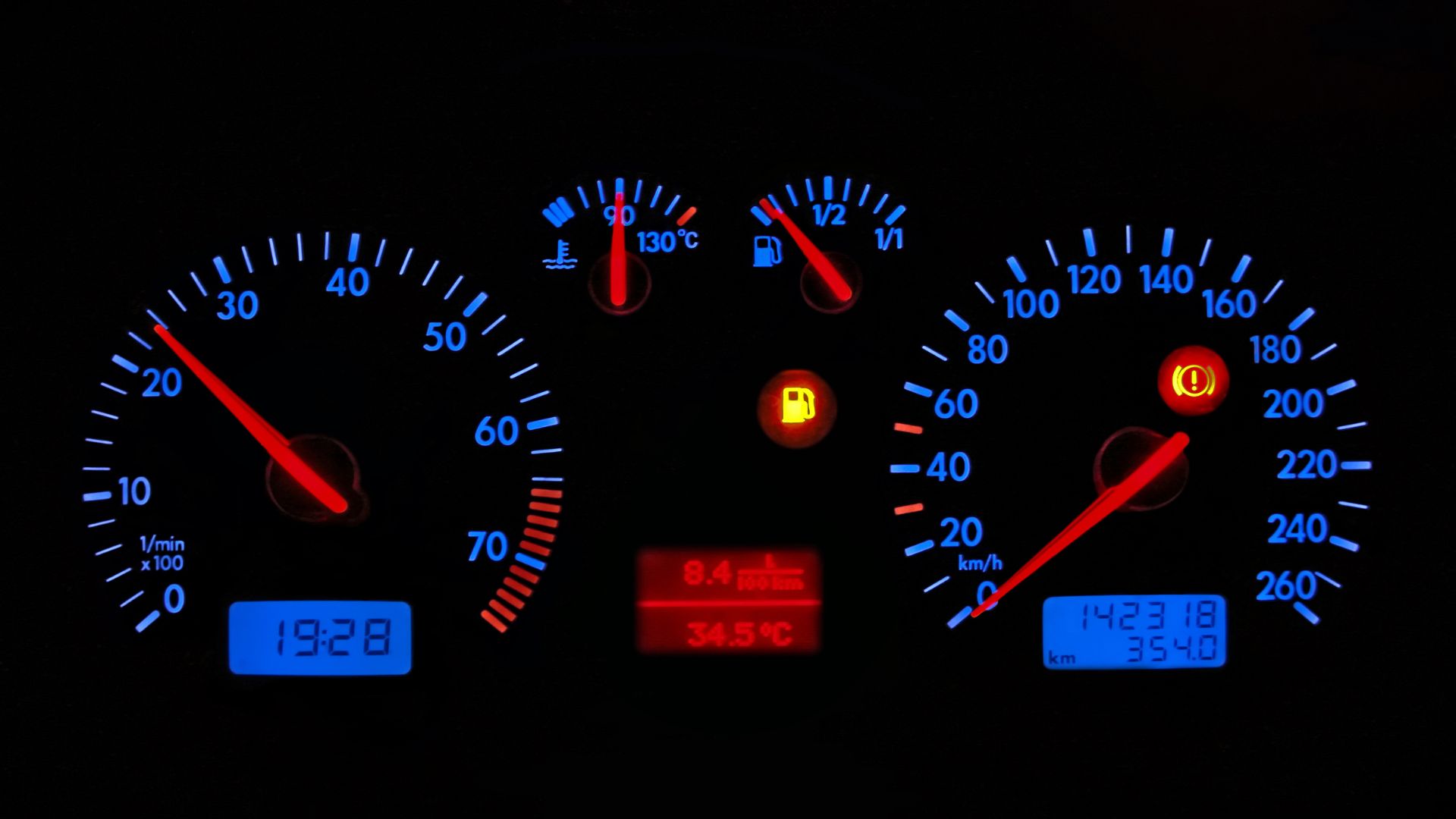A Ph.D. candidate from Ewha Womans University in Seoul noted in a paper that instrument panels have become increasingly intricate over the years, to the point where most drivers (98 percent) don’t even understand some of the warning icons they see on the dashboard.
You also have this paper from Carnegie Mellon University, Pittsburgh (Human-Computer Interaction Institute and School of Design) which noticed that manufacturers are experimenting with advanced user interface technology to simplify an elderly driver’s ability to perceive and comprehend the instrument panel.
What does this mean? Dashboards are already too confusing for some people. A dashboard without working lights is a problem for everyone, not just the elderly but younger drivers that rely on the instrument cluster to keep track of fuel consumption, engine temperature, and the like. Why would the dashboard lights stop working? You can blame the following:
1). You Dimmed The Lights

Did you know you can dim the lights in a car? Use the manual to identify the dimmer switch. Increase the brightness. If you’re lucky, the dashboard lights will come back on.
Don’t limit your search to dashboard light dimmers. In many cases, switches controlling the headlamps will also dim the dashboard lights.
2). The Fuse Has Blown
Cars have multiple fuses. You will find them in one or more fuse boxes. The box has a cover with a diagram that shows you the components each fuse controls. Without these diagrams, finding the fuse controlling the dashboard will take hours.
Some manufacturers assign multiple fuses to the dashboard. Each fuse will control a different instrument in the panel. In that case, find the fuse assigned to the lights and test it. Any fuse with a broken filament or blackened walls is dead.
But if you have doubts, test the fuse with a multimeter. A dead fuse won’t allow the current to flow.
3). You Need New Bulbs
Fuses are not difficult to troubleshoot. Locating the fuse box and identifying the dead fuse will take you minutes. But if you think the dashboard bulbs have failed, you must remove the dashboard trim.
The manual will guide you. If you can’t find it, visit Nissan’s platform and ask for help. Dead bulbs are not necessarily a sign of trouble. Every bulb eventually burns out. John C. Steiner, David R. Thorn, and Neil E. Clark noted in a paper that modern vehicles use LEDs instead of the incandescent bulbs older vehicles favored.
Incandescent bulbs generate too much heat. They also have shorter lifespans. LEDs are cool and long-lasting. However, you can’t expect them to last forever. The dashboard lights will go out once the bulbs fail.
4). The Wiring Is Damaged
The worst-case scenario is a short because finding it is easier said than done. The same goes for bad ground. If you’re lucky, a bumpy road knocked some wires loose. You won’t know until you troubleshoot the electrical system, starting with the cables feeding the dashboard.
If your Nissan Altima spends a lot of time in storage, damaged wires shouldn’t surprise you because rodents can sneak into the vehicle and chew through the electrical lines. Don’t limit your search to the wires behind the dashboard. While that is a decent place to start, the problem could originate from various points along the electrical system.
5). The Battery Is Dying
Dead electronics in a car may point to a bad battery or alternator. The battery is your car’s primary power source. However, the alternator runs the Nissan Altima’s electrical system. It will also charge the battery.
A malfunction in either component can affect the dashboard lights, especially if the lights are flickering.
How To Fix Nissan Altima Dashboard Light That Isn’t Working?
You can fix dashboard lights that don’t work by applying one or more of the following solutions:
1). Replace The Blown Fuse
A fuse can blow because of a short circuit, corrosion, old age, overloads, and replacing a dead fuse with the wrong one. Knowing why the old fuse blew allows you to prevent the next fuse from blowing.
For instance, if the first fuse blew because of incorrect wiring, every other fuse you insert will blow until you fix the wiring issue. Fuses are cheap. But they will still annoy you if they keep blowing because replacing a fuse means parking your car and finding the fuse box.
If you’re not convinced that your dashboard fuse is dead, connect a multimeter’s red and black leads to either end of the fuse.
A good fuse will show zero or low resistance on the multimeter’s display. A higher reading points to a faulty fuse.
2). Turn The Headlights ON And Increase The Brightness.
This means locating the dimmer switch near the steering column. This assumes that you lowered the brightness of the dashboard lights. If the problem lies elsewhere, increasing the brightness won’t help you.
3). Replace Dead Bulbs
Disconnect the battery before you proceed. This prevents shorts and shocks. Start with the negative terminal.
The next step is to remove the dashboard trim. The procedure will vary depending on the model. Some dashboard trims are easier to remove than others. The instrument cluster faceplate comes off after.
Pluck the bulbs from the back of the instrument panel and replace them with functional bulbs. Your vehicle may require an entirely new panel. It isn’t always possible to replace individual bulbs.
Try to replace all the lights. Don’t just replace the few bulbs that don’t work. Otherwise, the older ones will fail later, plunging a section of the dashboard into darkness.
4). Consult A Mechanic
If you have incorrect wiring, you can’t avoid hiring an expert. As a layperson, you don’t have the skill or experience to troubleshoot a car’s wiring in search of loose or broken wires. Consult a mechanic. They will also check the battery and alternator, replacing them where necessary.

